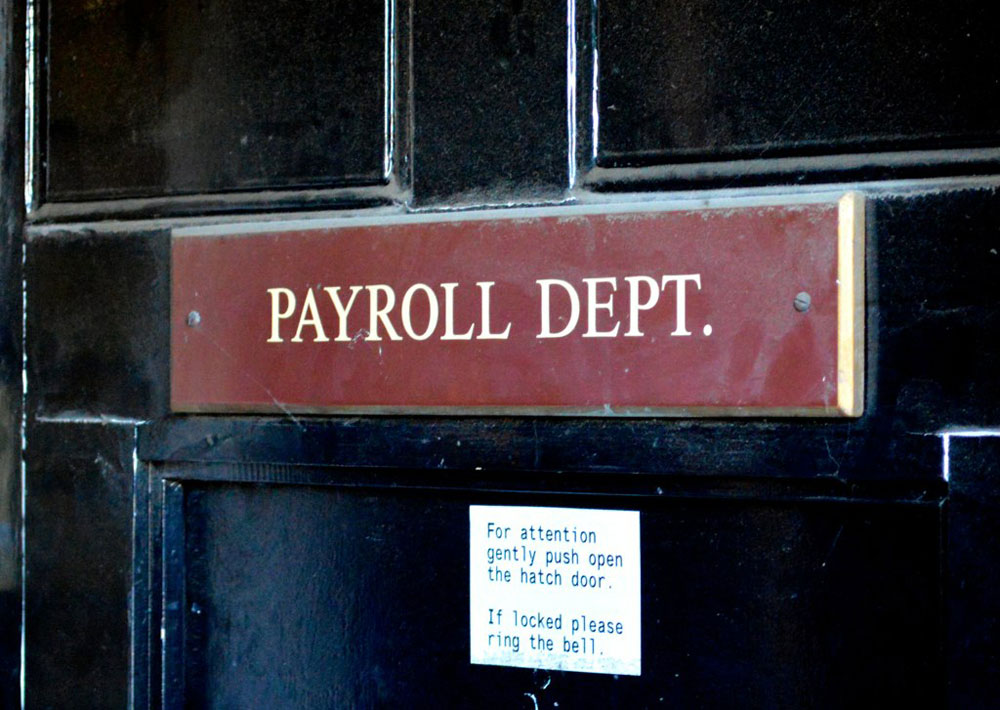
Yesterday, we asked readers to tell us what their experiences were with the now fully spent-down Paycheck Protection Program (PPP), Part One. One reason we’re doing this is in anticipation of the planned Part Two of this federal response to the COVID-19 crisis. We figure you should go into it with eyes wide open, because those who applied found it a mixed bag.
Naturally, your take on the scrum that was the application process will be tinted in retrospect by whether or not you finally received your (hopefully forgivable) loan. That last point is important; we have no idea what the process for forgiveness of these loans will look like, but if it is anything like the application process, that may be yet another hurdle for successful applicants. We will keep an eye on that.
Before we go into reader experiences with the program, we looked yesterday at the preliminary report on spending from the funds and some of the “scandals” that surrounded a few restaurant and hotel chains that received some of the larger loans. As the Washington Post reports, this was no scam perpetrated by those chains, but their use of a resource against legitimate losses. A provision was written into the program that allowed those chains, under certain conditions, to apply for each location as if they were separate. The loans that went to those entities were among the biggest. Because some chains had subsidiaries that applied separately, some were even able to exceed the $10 million limit, and when the program ran dry 13 days after it began, those enterprises were shamed publicly for their use of funds that were billed publicly as for small businesses exclusively.
Of course, part of the problem is the program is a convoluted way to keep employees on payroll, badly disguised as loans. A more appropriate policy response would be to cover payroll for all employees, of large companies and small, as US Representative Pramila Jayapal (D-WA) and Rep. Josh Hawley (R-MO) have both proposed.
According to Forbes, 71 publicly traded companies in all made use of the program, some in ways that ate into the limited capacity of the available funds.
Alexander’s Holdings, based in Nashville, obtained two separate loans totaling $15.1 million. Ruth’s Hospitality Group, which operates the Ruth’s Chris Steak House chain, got $20 million combined from the SBA program through two different subsidiaries.
One chain, the Shake Shack, worth $1.6 billion, ended up turning their $10 million loan back with apologies.
More straightforward in the “scandal” department was the behavior of some of the large banks—specifically, Wells Fargo, Bank of America, JPMorgan Chase, and US Bancorp—which are now being sued because they allegedly, to maximize their own fees, prioritized large for-profit clients over other applicants while not letting the smaller applicants know. Those actions, say the small business plaintiffs, violated the “first-come, first-served” promise of the SBA [US Small Business Administration] program and effectively blocked access for the smaller entities by keeping them waiting as they processed the larger ones, thus helping weight the final recipient list towards larger entities.
Banks earned origination fees of five percent on loans up to $350,000, three percent on loans between $350,000 and $2 million, and one percent on loans between $2 million and $10 million. That means they earned $17,500 for processing a $350,000 loan, compared to $100,000 for a $10 million loan.
An April 16 report from the SBA details the distribution of the loans, which in the end averaged $206,000.
On the ground, the experiences of nonprofit loan applicants were all over the map. Jodie McGaughey, vice president of Finance at Hardin-Simmons University in Texas, reports that they secured their loan easily and early only to see it evaporate.
While securing our loan was fast and easy, retaining the loan was not. There was a noise surrounding whether student workers belonged in the head counts or not. We transparently applied showing reconciliation of our head counts with and without student workers. We also excluded student worker pay from our requested funds. Our application went in on 4/5. We were funded on 4/8. Our loan was rescinded on 4/15. I fully agree with the rescission once the student worker inclusion [issue] was decided. We will move onto the Main Street Loan program and see if we can get stopgap funding there. Either way, it is going to be a cash-strapped summer for us.
Sign up for our free newsletters
Subscribe to NPQ's newsletters to have our top stories delivered directly to your inbox.
By signing up, you agree to our privacy policy and terms of use, and to receive messages from NPQ and our partners.
A nonprofit museum which has asked to remain nameless writes that their application process was also relatively painless:
We were able to secure a loan of almost $1.2 million and the process was fairly quick and easy. We received the funds on 4/14 via Chase. ADP was able to provide us with the necessary documentation for determining the loan amount. We expect to use all of the funds for payroll, taxes, benefits, and rent.
But, even among those who were finally funded, many experienced problems at larger banks. Some were lucky enough to quickly ken they were being treated to a second-class experience. One housing organization that also wants to remain nameless made the shift early to a smaller, more local bank.
I first assumed that the larger national banks would be prepared for the application and be able to process it faster. As a result, I reached out to US Bank. US Bank seemed to have prioritized their application materials for specific types of business first and that did not include non-profits. I then sought assistance from a couple of our board members that worked for a small local bank. They immediately sent me the application. As a second choice, I requested an application from a small local bank that we hold our operating account with. They immediately sent me the application. It turned out that it was easier to apply to the small local bank that had our operating account because our signor information including names, social security numbers, and photo IDs were already on file with them. It saved me a great deal of documentation when I was in a hurry before the PPP funds were gone.
It took me a little bit of time to determine which payroll taxes went in which area of the worksheet that supplemented our loan application to determine how much we could borrow. This is not something I have to do often, but once I figured it out, it went smoothly. Some of the questions were not applicable to nonprofits but this is common with some other things that we do as well. For example, sometimes large nationwide banks put out grants that ask questions as if we are for profit. Basically, we answer “no” or try to find a way to explain that this is not applicable…
This particular nonprofit was well acquainted with the use of loans, however, and saw others in their community unprepared to go after the money.
For our organization, assuming that the forgiveness works as planned, this will truly be a job-saving grace through this challenging time. I tried to share information about PPP and EIDL [Economic Disaster Injury Loan] with other nonprofits, but most did not think it was for them. They referred to a “grant” that they were going to apply for. I’m not sure that they even got a chance to try before the money was gone. I pretty much had to stop what I was already needing to get done and begin working on the application immediately. No time to process it. I hope there will be another round of funds so that the nonprofit helping organizations can have another opportunity to try.
But not everyone who applied was funded and they still await what we all anticipate will be a second round of funding under PPP. Yolanda Watson Spiva, president of College America, reports that even though they applied early, they never got processed:
Thank you for your article on “who got what” in terms of PPP. We applied right out of the gate but are being told our loan will be validated by the SBA if another round of funding is approved.
And we are being told, as late as today, that a $450 billion “deal” is nigh, which will include a $300–$320 billion refresh of the PPP funds.
Nonprofits may want to take the time now to ensure that they have a friendly lender lined up and their application forms and supporting documents in order. Consult your networks for those who have already applied and been granted loans to get pointers, and check with your local community development financial institutions (CDFIs) to see if they have been certified as lenders under this program. Check your state associations of nonprofits for guidance and join while you are there. Remember that this program rolled out within days last time, causing an enormous amount of confusion. It may be that the way has been eased for those next up, but make use of those who have gone before!












